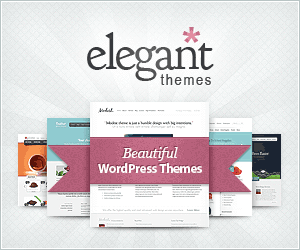Conversion Rate Optimization Web Development and Design: Top 5 Proven Strategies for Success
Conversion rate optimization web development and design is vital for turning clicks into loyal customers. Having a visually appealing website is not enough. Your website should be strategically designed to guide visitors towards taking desired actions. This involves seamlessly blending web development with smart design principles to improve user experience and boost conversions. Key elements include:
- Clear Calls-to-Action (CTAs): Ensure CTAs are visible and compelling.
- User-Friendly Layouts: Design layouts with intuitive navigation and ample white space.
- A/B Testing: Experiment with different design elements to find what works best.
- Mobile Optimization: Ensure your website loads quickly and is easy to use on mobile devices.
- Engaging Content: Craft persuasive and action-oriented text that resonates with your audience.
By mastering these aspects, your website can transform from a static online presence to a dynamic engine driving business success.
I’m Randy Speckman, the founder and CEO of Randy Speckman Design, with years of experience in conversion rate optimization web development and design. My team and I have a proven track record of crafting high-performance websites that boost engagement and sales. Join me as we dive deeper into the intricacies of converting clicks into customers.

Conversion rate optimization web development and design helpful reading:
– optimize website tool
– web design and search engine optimization
Understanding Conversion Rate Optimization
Conversion Rate Optimization (CRO) is all about turning site visitors into active participants. It’s about understanding what actions you want users to take and how to guide them there. Whether it’s making a purchase, signing up for a newsletter, or downloading an e-book, each action counts as a conversion.
Desired Actions
Every website has different goals. For an e-commerce site, a conversion might be a completed purchase. For a non-profit, it might be a donation. Identifying these desired actions is the first step in CRO. Knowing your goals helps you design your site to encourage these actions.
User Behavior Analysis
To optimize conversions, you need to understand your users. This means analyzing how visitors interact with your site. Tools like Google Analytics and Hotjar can show you which pages get the most traffic and where users drop off. This data helps you spot problem areas and opportunities for improvement.
For example, if you notice a high bounce rate on a product page, it might mean the page isn’t engaging or the call-to-action isn’t clear enough. By understanding these behaviors, you can make data-driven decisions to improve your site.
Real-World Impact
Consider a case where a company noticed many users abandoning their shopping carts. By analyzing user behavior, they finded that the checkout process was too complicated. Simplifying the checkout process led to a 20% increase in completed purchases.

Conversion rate optimization web development and design isn’t just about making your site look good. It’s about creating a seamless journey for your users. When you understand what drives your audience, you can craft a site that not only attracts visitors but also converts them into customers.
Next, we’ll explore the design elements and testing strategies that can further improve your conversion rates.
Conversion Rate Optimization Web Development and Design
When it comes to conversion rate optimization web development and design, the focus is on creating a user-centric experience. A well-designed website is like a good conversation—it flows smoothly and leaves visitors satisfied.
User Experience
User experience (UX) is at the heart of CRO. A site that’s easy to steer and visually appealing keeps visitors engaged. When users find what they need without hassle, they’re more likely to complete desired actions like making a purchase or signing up for a newsletter.
Consider the case of UNICEF Spain. By reducing donation funnel steps from four to two, they streamlined the user experience and reduced abandonment rates. This change made it easier for users to complete donations, directly impacting conversion rates.
Design Layout
The design layout of your website plays a crucial role in guiding users toward conversions. A clean, intuitive layout helps users find information quickly. Key elements such as headlines, images, and calls-to-action (CTAs) should be strategically placed to capture attention and encourage interaction.
For instance, Basecamp increased their landing page conversion rate by simply adding a smiling human face to the background. This small change made the page more inviting and relatable, proving that even minor adjustments can have significant effects.
A/B Testing
A/B testing is a powerful tool in CRO. It involves creating two or more versions of a webpage or element and testing them to see which performs better. This method allows you to make informed decisions based on actual user behavior rather than assumptions.
Google’s tools can help you conduct A/B tests efficiently. Although they might not offer extensive details, they are a good starting point for identifying what works best for your audience. Whether it’s changing the color of a CTA button or altering headline copy, A/B testing helps you optimize every element for maximum conversion.

In conclusion, focusing on user experience, design layout, and A/B testing can significantly improve your site’s conversion rates. By understanding what your users need and making data-driven decisions, you can create a website that not only attracts visitors but also converts them into loyal customers.
Next, we’ll dive into key techniques for effective CRO, including optimizing landing pages and crafting compelling calls-to-action.
Key Techniques for Effective CRO
To master conversion rate optimization web development and design, focus on specific techniques that drive results. Here, we’ll explore three critical areas: landing pages, call-to-action (CTA), and mobile optimization.
Landing Pages
Landing pages are the first impression many visitors have of your site. They play a vital role in conversion rate optimization. According to a Marketing Sherpa report, companies using dedicated landing pages have a higher success rate in lead generation.
Key elements of an effective landing page include:
- Compelling Headline: Grab attention with a headline that is clear and directly related to your offering.
- Clear CTA: Ensure your call-to-action is visible and prompts immediate action.
- User-Friendly Design: Keep the layout clean and information above the fold to maintain focus.
For instance, a simple change like adding a testimonial or a human face to your landing page can significantly boost conversions, as shown by Basecamp’s success story.
Call-to-Action (CTA)
A call-to-action is the driving force behind conversions. It guides visitors to take the desired action, whether it’s signing up, purchasing, or downloading content.
Tips for crafting an effective CTA:
- Use Contrasting Colors: Make your CTA button stand out visually.
- Action-Oriented Text: Use verbs like “Get Started,” “Sign Up Now,” or “Buy Today.”
- Strategic Placement: Position your CTA where it’s easily noticeable, such as at the top of the page or after persuasive content.
Incorporating these elements ensures your CTAs are not just seen but acted upon, driving higher conversion rates.
Mobile Optimization
With more users accessing websites on mobile devices, optimizing for mobile is crucial. A slow or unresponsive mobile site can lead to high bounce rates and lost conversions.
Steps to optimize for mobile include:
- Responsive Design: Ensure your website adapts to different screen sizes seamlessly.
- Fast Load Times: Compress images and leverage lazy loading to speed up page loads.
- Simplified Navigation: Make it easy for users to find what they need with minimal scrolling and clicks.
By focusing on mobile optimization, you ensure a smooth user experience across all devices, which is essential for maintaining and increasing conversions.
Next, we’ll explore the top 5 best practices for CRO, including enhancing user engagement and utilizing analytics for continuous improvement.
Top 5 Best Practices for CRO
When it comes to conversion rate optimization web development and design, there are a few best practices that can make a significant difference. Let’s explore five key areas: user engagement, social proof, the checkout process, heatmaps, and analytics.
User Engagement
Engaging your users is crucial for improving conversions. The more time visitors spend on your site, the more likely they are to convert.
Ways to boost user engagement:
- Interactive Elements: Add quizzes, polls, or infographics to capture attention.
- Personalized Content: Tailor content to individual users based on behavior or preferences.
These strategies not only keep users on your site longer but also make their experience more enjoyable.
Social Proof
Social proof can be a powerful motivator. People often look to others when making decisions, and showcasing positive experiences can sway potential customers.
Examples of social proof include:
- Testimonials: Share customer stories and feedback prominently.
- Reviews and Ratings: Display product ratings and reviews to build trust.
According to a study, 92% of consumers trust recommendations from others, even if they don’t know them personally.
Checkout Process
A smooth checkout process is vital for converting visitors into customers. Complicated or lengthy checkouts can lead to cart abandonment.
Tips for an optimized checkout process:
- Simplify Steps: Reduce the number of steps needed to complete a purchase.
- Guest Checkout: Allow users to purchase without creating an account.
- Clear Progress Indicators: Show users where they are in the checkout process.
By streamlining the checkout, you can reduce friction and increase conversions.
Heatmaps
Heatmaps provide a visual representation of user interactions on your website. They help identify which areas get the most attention and which are ignored.
Benefits of using heatmaps:
- Identify Popular Areas: See where users click and spend the most time.
- Spot Issues: Find elements that might be causing confusion or frustration.
This data is invaluable for making informed decisions about design changes and improving user experience.
Analytics
Continuous improvement relies on data. Analytics tools help track user behavior and measure the success of your optimization efforts.
Key metrics to track:
- Conversion Rates: Monitor how effectively your site turns visitors into customers.
- Bounce Rates: Identify pages where users leave without interacting.
- Traffic Sources: Understand where your visitors are coming from.
By leveraging analytics, you can make data-driven decisions to improve your website’s performance.
Next, we’ll address frequently asked questions about conversion rate optimization, including common mistakes to avoid and how website design impacts conversion rates.
Frequently Asked Questions about Conversion Rate Optimization
What is conversion rate optimization?
Conversion Rate Optimization (CRO) is about improving your website to get more visitors to take specific actions. These actions can include making a purchase, signing up for a newsletter, or filling out a contact form. The ultimate goal is to increase the percentage of visitors who convert into customers or leads.
Think of CRO as a way to make the most of the traffic you already have. Instead of focusing solely on attracting more visitors, CRO ensures that the visitors you do have are more likely to complete the desired actions.
How does website design affect conversion rates?
Website design plays a crucial role in conversion rate optimization web development and design. A well-designed site improves the user experience, making it easier for visitors to steer and find what they need. Here’s how design impacts conversion rates:
-
Design Layout: A clean and intuitive layout helps visitors focus on key elements like call-to-action buttons and product information. A cluttered design can distract and overwhelm users, leading to higher bounce rates.
-
User Experience: A seamless user experience builds trust and encourages users to stay longer. Easy navigation, fast loading times, and mobile-friendly designs are essential components.
For example, a study found that 38% of users stop engaging with a website if the content or layout is unattractive. This highlights the importance of prioritizing design to boost conversions.
What are common CRO mistakes to avoid?
While CRO offers significant benefits, there are pitfalls to watch out for:
-
Not Testing Enough: Avoid relying on assumptions. Regular A/B testing helps determine which design elements work best. For instance, testing different headlines or button colors can reveal what resonates more with your audience.
-
Ignoring Mobile Optimization: With more people browsing on mobile devices, failing to optimize for mobile can hurt conversions. Ensure your site is responsive and looks good on all screen sizes.
-
Neglecting User Feedback: User feedback is invaluable. Ignoring it means missing out on insights that could improve your site. Encourage feedback through surveys or by monitoring social media comments.
-
Overcomplicating the Design: A complicated design can deter users. Keep it simple and focus on guiding users toward the desired actions without unnecessary distractions.
By avoiding these mistakes, you can improve your website’s effectiveness and drive more conversions.
Next, we’ll conclude by highlighting how Randy Speckman Design can help you with conversion optimization.
Conclusion
At Randy Speckman Design, we know that conversion rate optimization is more than just a buzzword—it’s a crucial element of successful web development and design. Our expertise lies in crafting high-performing websites that not only catch the eye but also convert visitors into loyal customers.
Why Choose Us for Conversion Optimization?
-
Custom Strategy: We understand that each business is unique. That’s why we tailor our conversion strategies to fit your specific needs, ensuring that your website resonates with your target audience.
-
Data-Driven Decisions: Our approach relies on data. By utilizing tools like A/B testing and analytics, we make informed decisions that improve user experience and boost conversion rates.
-
User-Centric Design: We prioritize user experience in our designs. This means intuitive layouts, seamless navigation, and fast-loading pages that keep users engaged and lead them to take action.
-
Continuous Improvement: Conversion optimization is an ongoing process. We continuously monitor and refine your website to stay ahead of the competition and meet evolving customer expectations.
Our team is dedicated to helping you turn clicks into customers. With locations in Kennewick, Richland, Pasco, and the Tri-Cities area, we’re ready to assist businesses in achieving their digital goals.
Ready to transform your website into a conversion powerhouse? Explore our web design optimization techniques and see how we can lift your online presence.
At Randy Speckman Design, your success is our mission. Let’s work together to create a site that not only attracts visitors but also converts them into customers.




